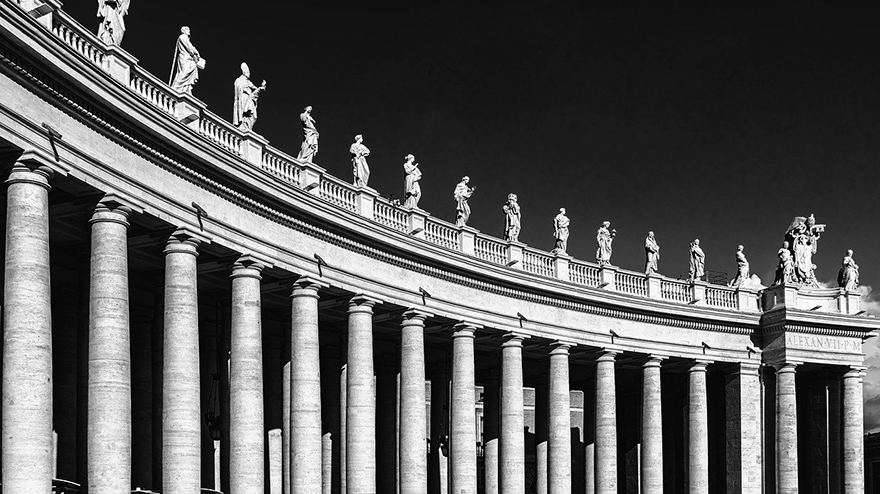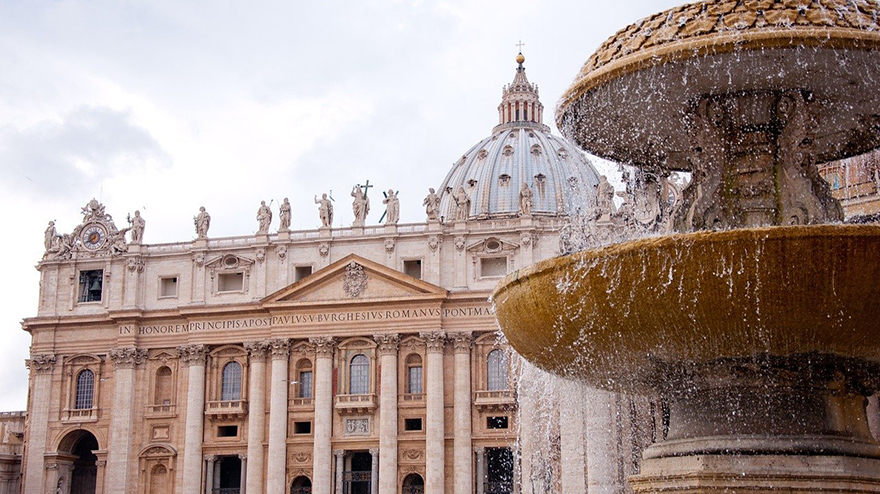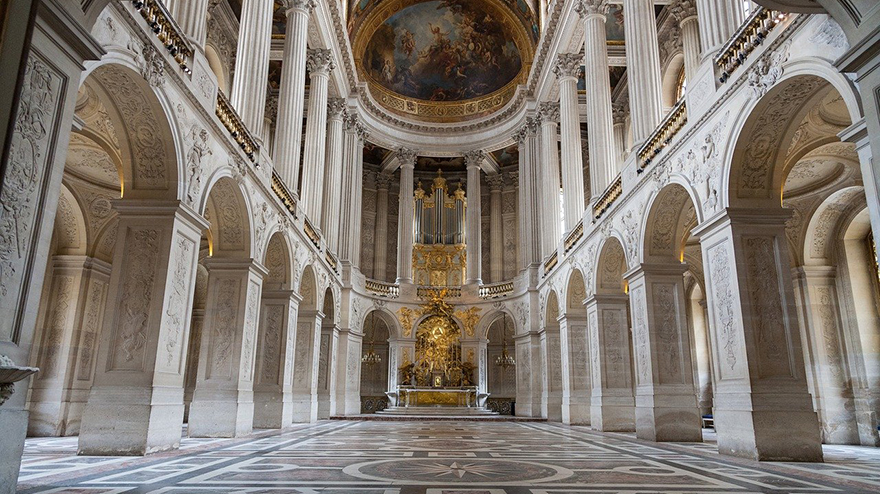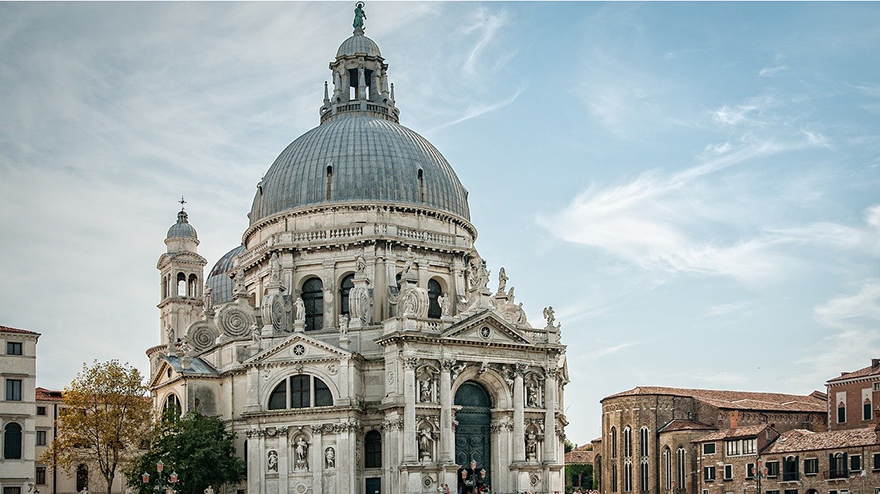
Beautiful Buildings of Baroque Architecture
The word ‘baroque’ came from the Portuguese word ‘barocco’ or the Spanish word ‘barueco’ which means irregularly shaped pearl. Later, the name came to indicate an extravagant style of architecture influenced by rich and highly ornate elements. Baroque architecture emerged in America and Europe between the 17th and 18th centuries. It had a completely different sense of style.
Various scientific discoveries, religion and political situations influenced the architecture of the period. The baroque architectural style was mainly characterised by:
- A sense of energy and motion by undulating walls and ornate details throughout the buildings
- Chiaroscuro with dramatic contrasts in lighting and shadows
- Artistic colour effects
- Bold volumes and masses, domes, colonnades
 Saint Peter's Basilica Square Colonnade, Vatican City, Rome, Italy by Architect Bernini
Saint Peter's Basilica Square Colonnade, Vatican City, Rome, Italy by Architect Bernini
Special Architectural Features Of Baroque Architecture
Baroque architecture is largely inspired by dynamic forms and designs to connect to the sensuality. Some of the key features of Baroque architecture are:
- Curving forms with undulated walls and facades
- Complex architectural plans
- Different forms of domes
- Grandeur and colossal scale
- Irregular forms
- Oval or elliptical shapes
- Extravagant ostentations and ornamental details
- Monumental stairways
- Brightly coloured and lively-painted ceilings
- Solomonic columns having a spiral shaft
- Intentionally unfinished elements
- Mirrors
- Illusory artistic effects, i.e., trompe l’oeil
- Sculptures
Early Baroque Period (1584-1625)

Saint Peters Basilica, Vatican City, Rome, Italy by Architect Carlo Maderno
The early Baroque period (1584-1625) was characterized by grand religious architecture to create sensuous and emotional connections with people and inspire them through the magnificence of design.
High Baroque Period (1625-1675)
Santa Maria della Salute Church, Venice, Italy by Architect Baldassare Longhena
Baroque architecture came to its top during the High Baroque period (1625-1675). Francesco Borromini and Gian Lorenzo Bernini were amongst the most prominent architects of this era. The influential architect Borromini designed the churches of Sant’lvo alla Sapienza, Oratorio dei Filippini and San Carlo alle Quattro Fontane. Bernini designed Fontana della Barcaccia, Fontana dei Quattro Fiumi and St. Peter’s Square. Some other remarkable buildings of the High Baroque era are Barberini Palace, Pavillon de I’Horloge, and Santa Maria della Salute.
Late Baroque Period (1675-1750)
 Chapel, Palace of Versailles, France by Architect Robert de Cotte
Chapel, Palace of Versailles, France by Architect Robert de Cotte
During the Late Baroque period (1675-1750), the style of architecture spread throughout Europe. Different Baroque styles were developed in different countries. A rather classical Baroque style was adopted in France such as the Chapel of the Palace of Versailles. Remarkable architects of this era were Carlo Maderno, Fischer von Erlach, Christopher Wren, Nicolas Hawksmoor and Balthasar Neumann.
Baroque architecture came as a reaction to the architecture of the Renaissance period. It inherited fundamental architectural features from the Renaissance era such as domes, and colonnades. But everything in Baroque architecture was richly ornate and elaborate.
The Link Between Baroque Architecture and Font Design
Baroque architecture and font designs share some common characteristics and historical contexts, although they are distinct art forms. Both emerged during the Baroque period, a cultural movement that began in the late 16th century and extended into the 18th century, primarily in Europe.
1. Embellishment and Ornamentation: Baroque architecture is known for its elaborate decoration, intricate details, and grandeur. Similarly, Baroque fonts often feature ornate flourishes, intricate letterforms, and exaggerated serifs, reflecting the extravagance of the architectural style.
2. Dramatic Expression: Baroque architecture aimed to evoke intense emotions and create a sense of awe in viewers. This dramatic expression is mirrored in Baroque fonts, which often have exaggerated proportions, bold contrasts between thick and thin strokes, and dynamic letter shapes that command attention.
3. Curvilinear Forms: Baroque architecture frequently incorporates curved lines, domes, and elaborate curves in its design. Baroque fonts often feature flowing, curvilinear shapes, with letters that swoop and curve in graceful arcs, echoing the architectural style's emphasis on movement and dynamism.
4. Symmetry and Balance: Baroque architecture often employs symmetrical layouts and balanced compositions to create a sense of harmony and order. Similarly, Baroque fonts often exhibit balanced letterforms and symmetrical designs, contributing to a sense of visual harmony and coherence.
5. Historical Context: Both Baroque architecture and Baroque fonts emerged during a period of significant cultural, political, and religious change in Europe. The Baroque style arose in response to the Counter-Reformation and the Catholic Church's desire to communicate its power and authority through art and architecture. Baroque fonts were often used in religious texts, architectural inscriptions, and other forms of visual communication associated with Baroque buildings, reinforcing the connection between the two art forms.
Overall, while Baroque architecture and font designs are distinct art forms, they share common aesthetic principles, historical contexts, and cultural influences that link them together as part of the broader Baroque artistic movement.












COMMENTS
lovve the pic at the end thanks